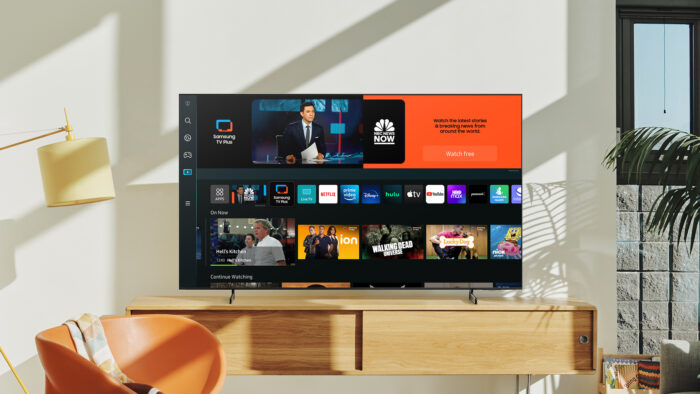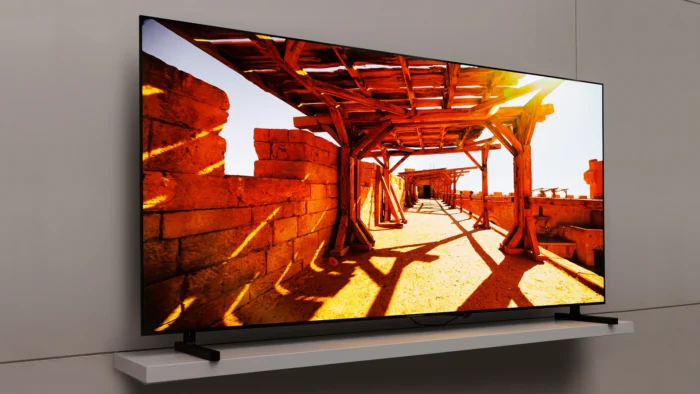Not long ago, a television was just a box. It sat in the living room like furniture, giving you three channels and maybe a fuzzy cable feed if you were lucky. You had to be home at 8 p.m. sharp to catch your favorite show, or you missed it. That’s not how things work anymore.
TV didn’t just evolve—it turned into something unrecognizable. It responds to your voice, connects to your phone, learns what you like, and gets updates like a phone would.
We’re living through something wild, but because it happened so fast, most of us didn’t stop to notice how much it changed until we looked up and realized our screen had taken over the whole wall—and somehow, it knows we like true crime on Tuesdays.
So what exactly is going on inside that giant, glowing rectangle? And where is it all heading? You don’t have to speak fluent tech to feel the shift. It’s not about faster, bigger, brighter anymore—it’s about making the screen feel like it’s a part of you.
The Rise Of TVs That Know You Better Than Your Friends
Today’s TV doesn’t just sit around waiting for you to pick something. It learns. You watch a few thrillers, and suddenly, your homepage fills with more edge-of-your-seat options.
It figures out what time you usually watch, whether you prefer comedy after dinner or documentaries on weekend mornings. Some TVs even track who’s in the room and adjust sound or brightness depending on where you’re sitting.
That used to sound a little creepy. Now it just feels convenient. The tech has made it normal to talk to your TV like it’s a friend. “Play that show I like,” you say out loud, and it does. It pulls up a title you didn’t even remember the name of, but it remembers how long you watched it, when you paused it, and what you binged right after.
This isn’t just clever coding—it’s tech changing the entertainment industry from something passive into something deeply personal. You don’t scroll through endless options anymore. Your TV already filtered them for you. What used to feel like wasting 20 minutes deciding what to watch now feels like the TV just gets you.
And once that happens, it becomes harder and harder to watch the old way again.
When The TV Breaks, The Smart Move Isn’t Buying A New One
Here’s the thing: when your TV does all this—when it’s got voice control, automatic updates, smart recommendations, seamless streaming, and it’s connected to every other device in your home—it becomes a lot more than a TV. It becomes a system.
A network of features that makes your day easier, smoother, and just a little more fun. So when something goes wrong, replacing it isn’t just expensive—it’s frustrating.
But there’s a smarter way to handle it. Instead of starting over, a lot of people are choosing to search online for TV repair near me, and they’re finding real help. The new generation of tech repair isn’t like calling the cable guy in the ’90s. It’s fast, local, and tuned into what modern TVs need.
Whether it’s a screen glitch, a sound issue, or a feature that just stopped working, skilled repair techs can fix it without making you lose everything your system already knows about you.
You keep your settings, your apps, your voice profiles, and your library of favorites. And more importantly, you keep that feeling of your living room being something just a little bit magical. A repaired smart TV isn’t just “working again”—it’s back to being your custom, everyday theater.
The Blur Between TV And Everything Else
TV isn’t really “TV” anymore. It’s a screen, sure, but that screen is pulling from a hundred different places. Streaming apps, your phone, your smart lights, your video doorbell, your playlist from earlier.
You could be watching a cooking show and send the recipe straight to your phone. Or answer your front door in a corner of your TV screen without ever pausing the game.
And this blending is getting even weirder—in a good way. Some TVs now show art when you’re not watching anything. Others automatically lower the volume when someone speaks in the room. And a few sync with your fitness tracker to suggest a light yoga video if it knows you’ve been sitting for a while.
It’s not far off from science fiction, but it doesn’t feel like fiction when it happens. It feels like your house is working with you. It’s not just a TV. It’s a collaborator. A quiet, glowing assistant that knows when to step forward and when to back off.
What Comes Next Could Change How We Think About “Watching”
If the last decade was about making TVs smarter, the next one might be about making them almost invisible. Think screens that roll up like paper or slide out of the ceiling.
Think of an image projection that follows you around the room, adjusting size and shape based on where you are. Think multi-user profiles that read your mood through your voice and suggest something you didn’t even know you needed.
And that’s not just a guess. Developers are already experimenting with features that will let a TV adjust its tone based on facial expressions. Or even stop a horror movie if your heart rate goes too high. That’s the kind of thing that makes you pause and realize: this isn’t about pixels anymore. It’s about experiences.
Kids growing up today will never understand what it felt like to miss an episode. They’ll never know a world where the TV didn’t wait for them. And maybe that’s okay. Because they’re stepping into a world where the screen bends around them—not the other way around.
Living Room Magic, Rewired
You might not notice the shift until your friend comes over and says, “Whoa, your TV does that?” But it’s happening—quietly, constantly, right in front of you. The screen you used to argue with now just nods and queues up your comfort show.
The buttons you used to hunt for have turned into gentle voice prompts. And the whole experience, when it works right, feels almost like a little trick of light and code made just for you.
TV didn’t just change—it turned into something else entirely. Something that feels a lot more alive.


